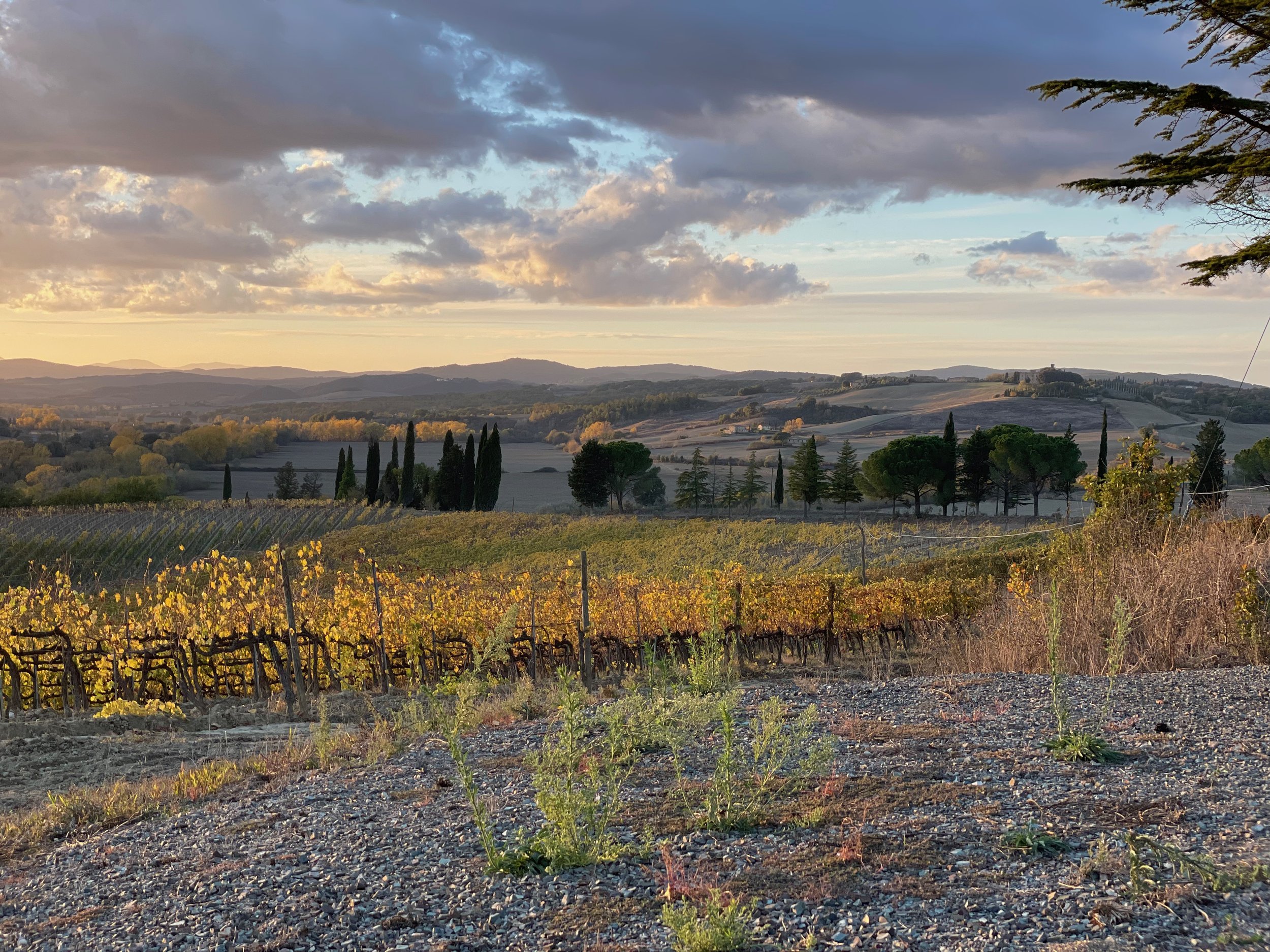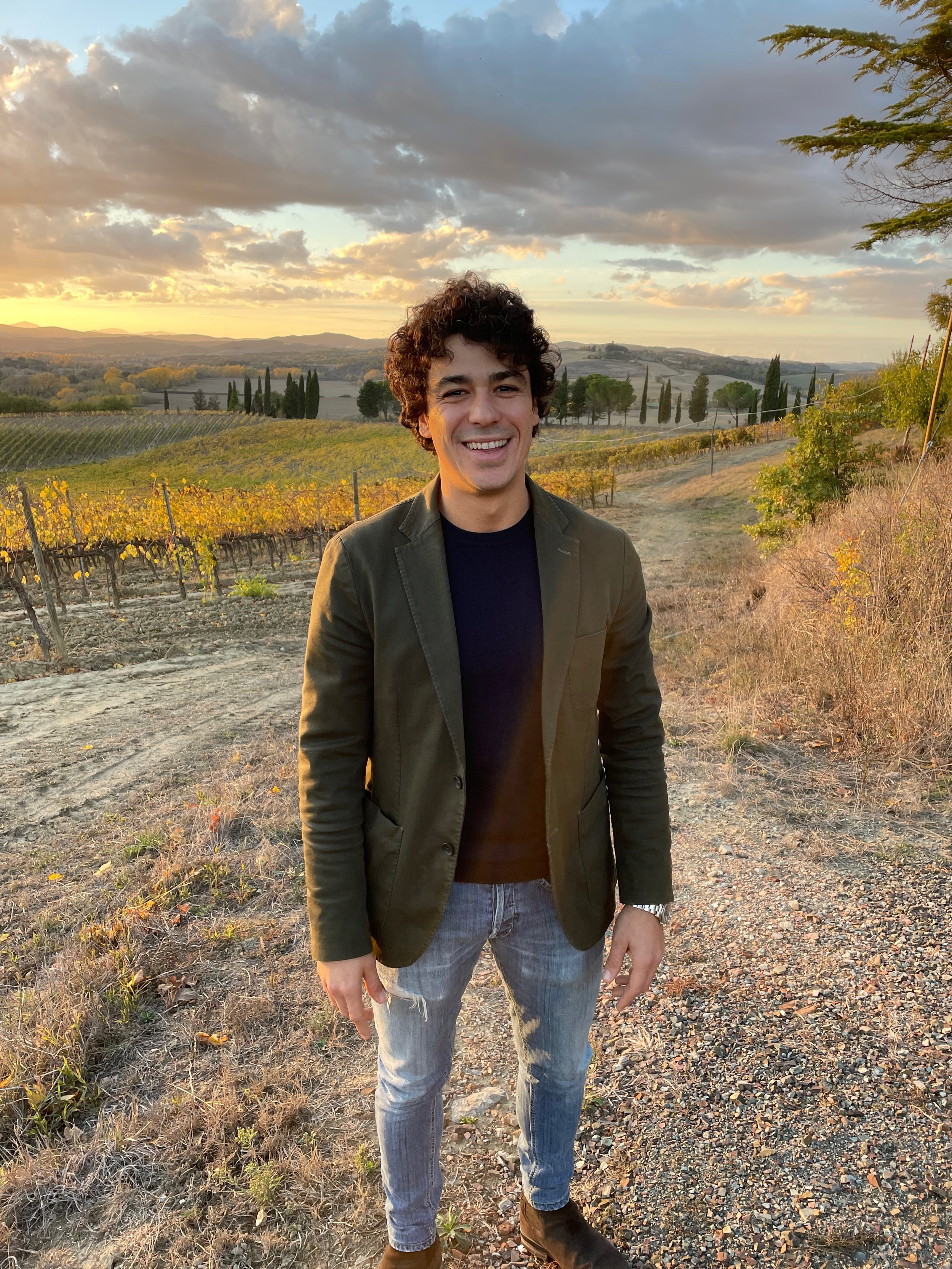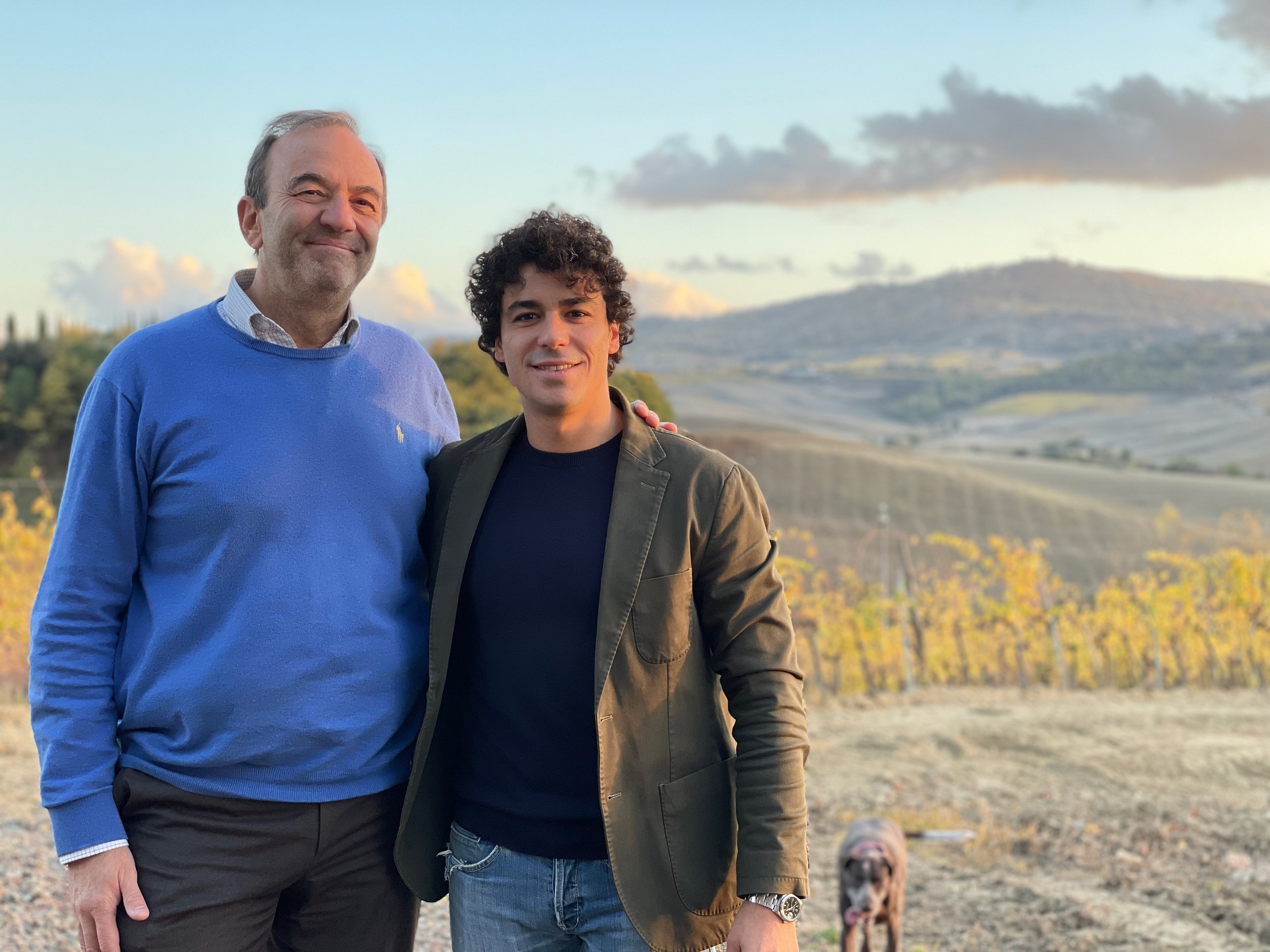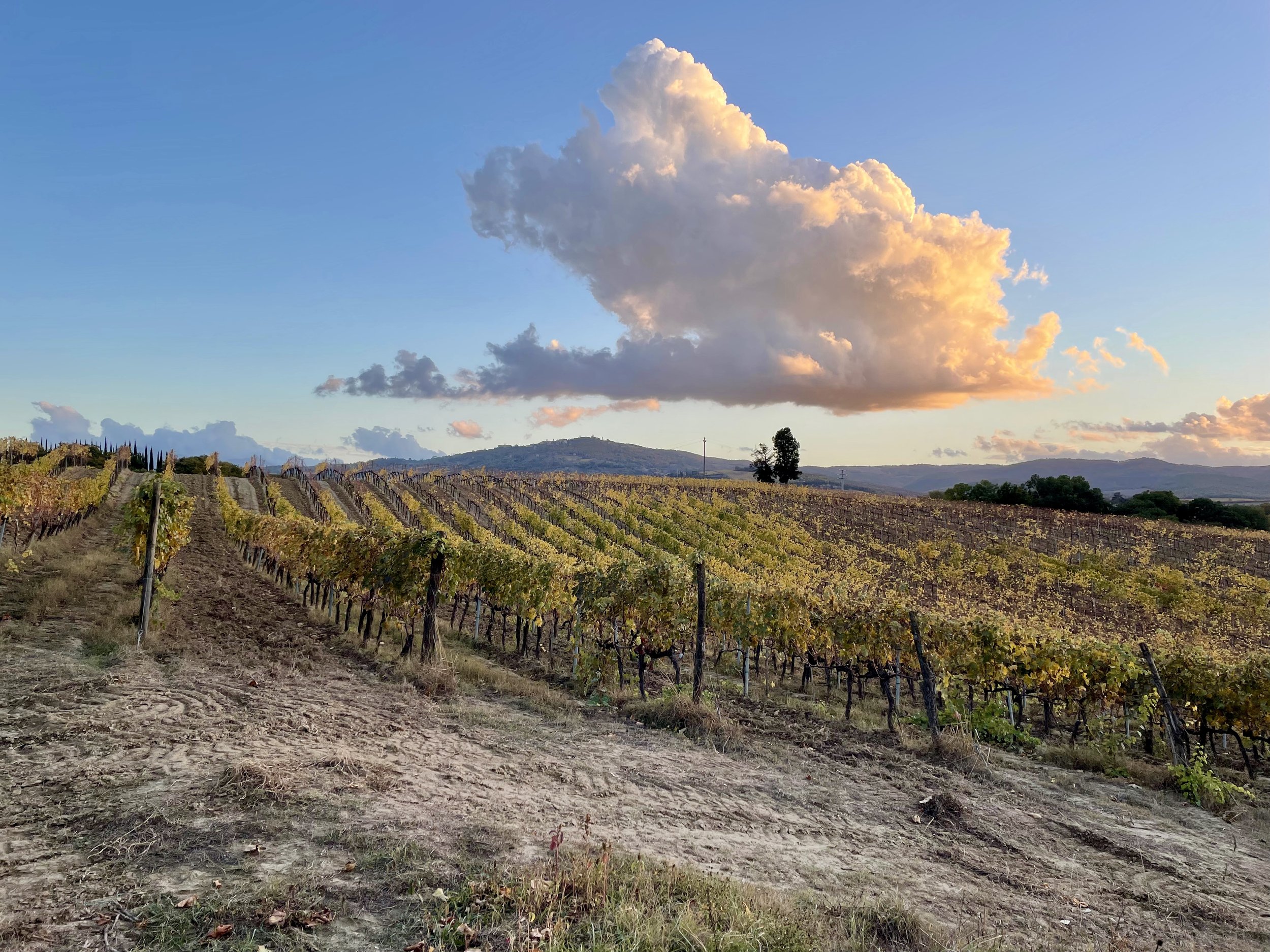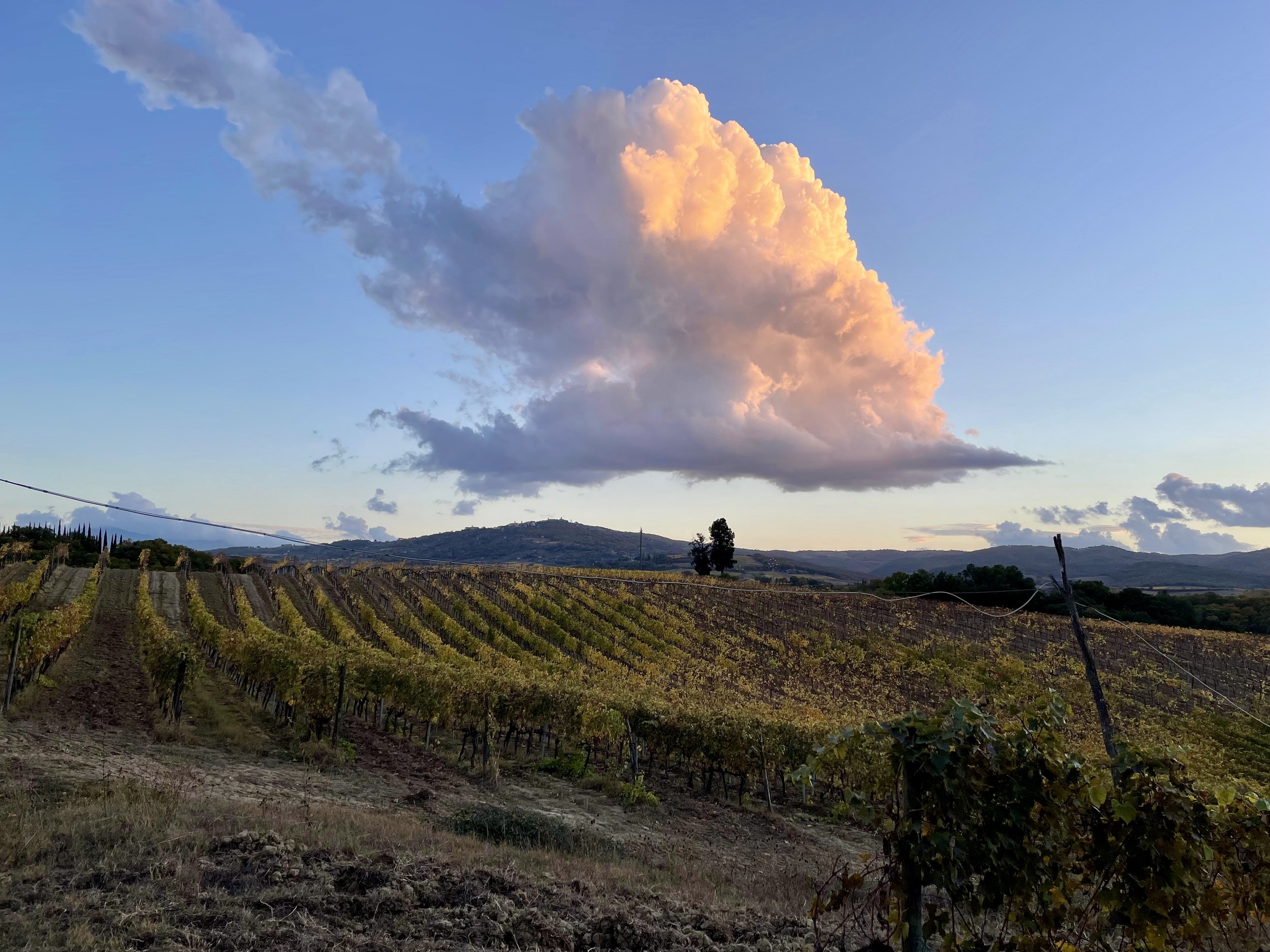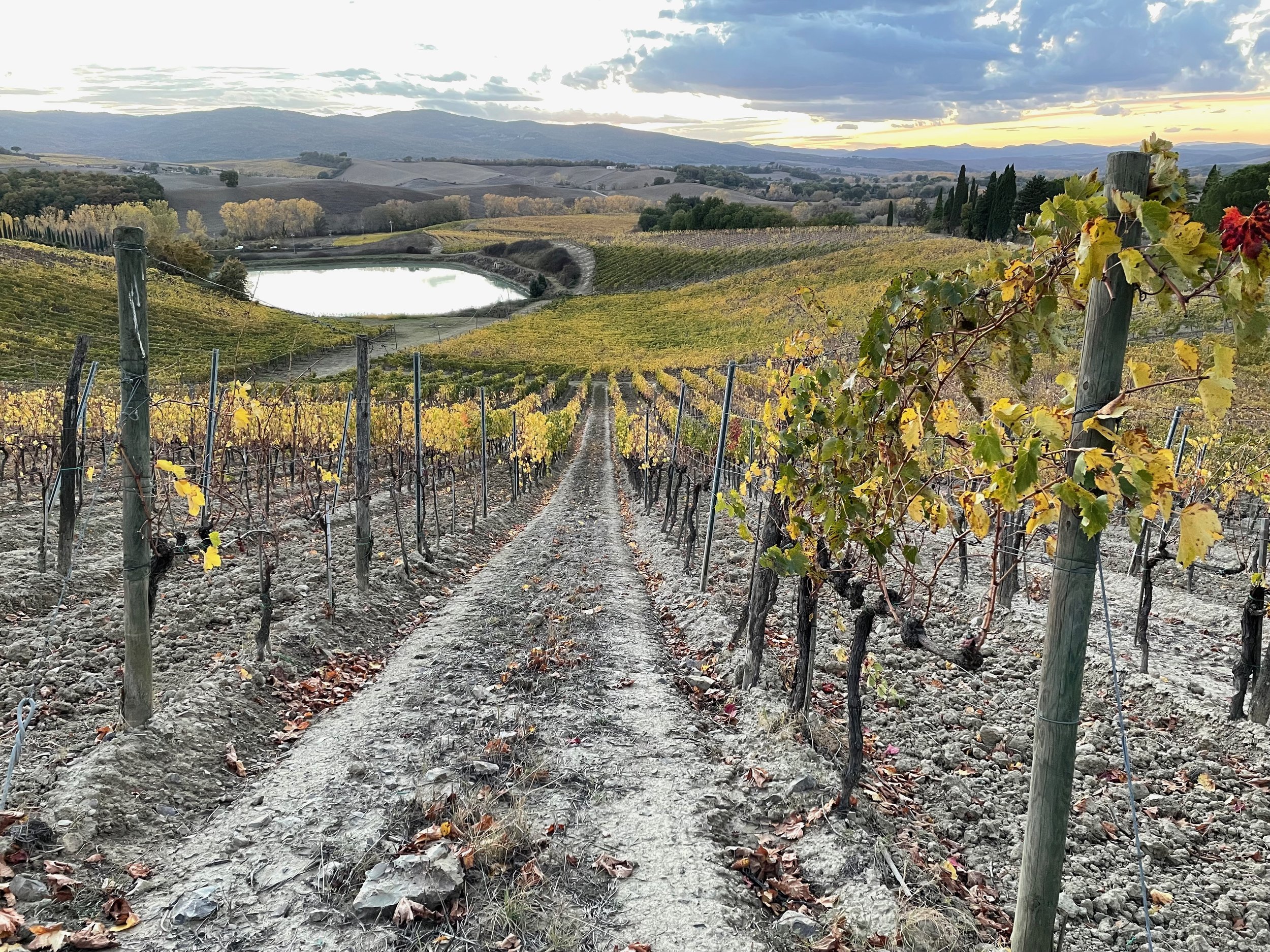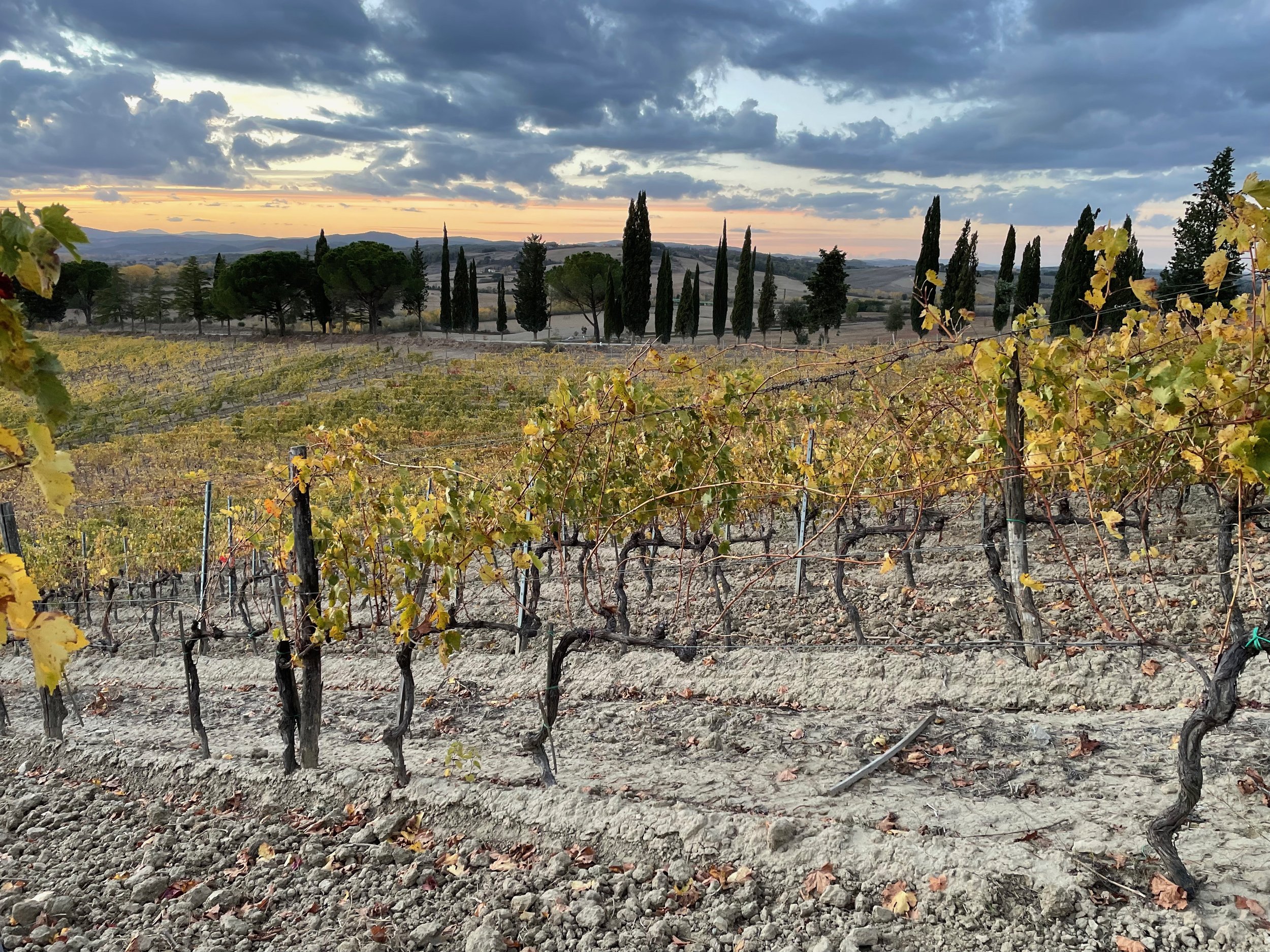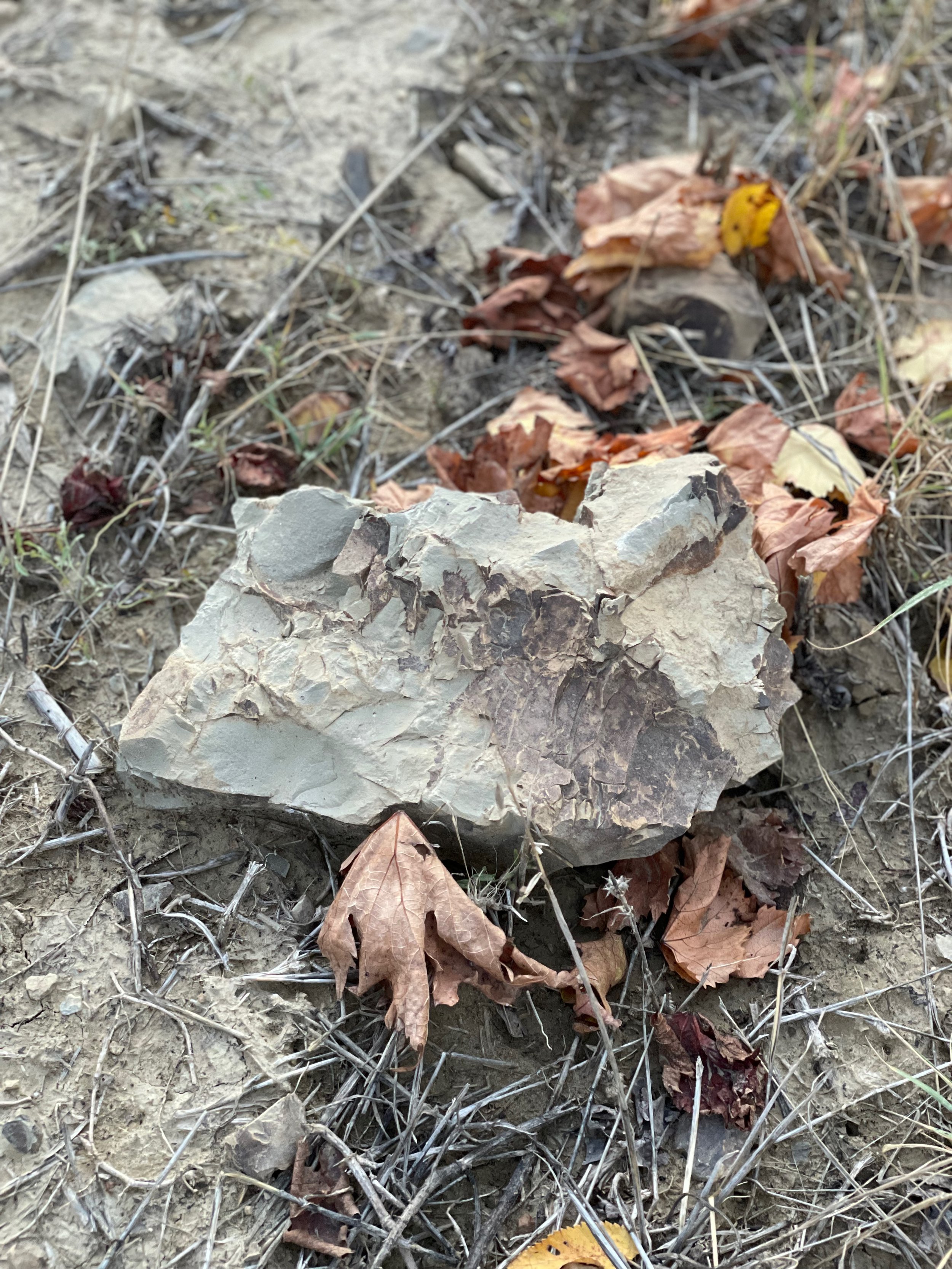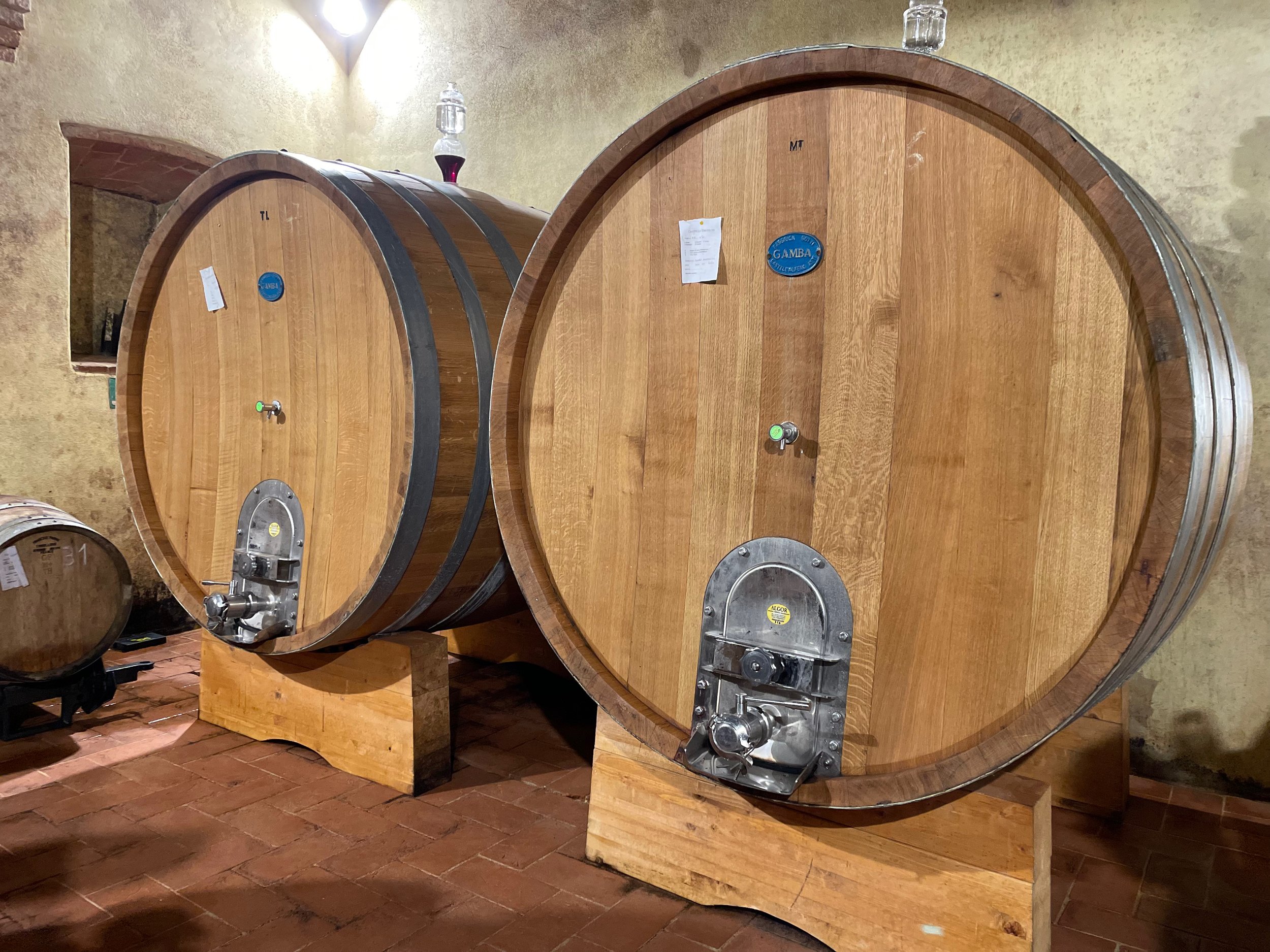Castello Tricerchi
About Castello Tricerchi:
Sangiovese is the most widely planted grape variety in Italy. It produces the whole gamut of wine quality, from barely acceptable commercial swill to noble wines that age for decades. Some very good Sangiovese is grown in the Romagna, but for me the finest examples are the best known Tuscan ones, Chianti Classico and Brunello di Montalcino. Montalcino is a beautiful hill-town south of Siena, about 90 minutes south of Chianti; Brunello is a local name for Sangiovese.
The Castello di Tricerchi was built in 1441, and is still owned by the the Squarcia family, who built it. It is in the far north of the Brunello di Montalcino appellation, very close to Altesino; wine growing is a relatively recent activity here, the vines having been planted in 1995, a little more than a century after the first commercial examples of Brunello were produced by the Biondi-Santi family. Tommaso Squarcia, a young scion of the family, has made it his mission to perfect the wines of the Castello; in co-operation with Maurizio Castelli, the great Sangiovese winemaking expert, he has decided to use completely traditional winemaking methods to allow the vineyards to fully express themselves. The wines are made entirely of Sangiovese (which is legally required but, ahem, not always in fact the case), fermented with indigenous yeasts, macerated on the skins for longer than normal, and aged in large oak barrels. The vineyards are around the castle, and the winemaking is carried out under it in a former dungeon, perfectly cold and humid. Total production is around 5,000 cases a year. As of 2022 the estate is converting to certified organic production.
_____________________________________________
the wines:
Rosso di Montalcino
100% Sangiovese, declassified from two Brunello vineyards, the Vigna del Piano and the Vigna dei Cipressi. Soils are a mixture of calcareous clay and sand; yields are restrained; harvest usually takes place at the end of September. The fermentation is carried out in stainless steel tanks, with a cold soak before fermentation and about thirty days of maceration on the skins in total. After fermentation the wine is aged in large neutral oak barrels for 8 months, then bottled.
I expect Rosso di Montalcino to show some of the red-fruit/cedar/sandalwood/tobacco-leaf character that Brunello does, but in a more drinkable, less age-worthy frame, and this is perfect. You could age this for 5-10 years but you don’t need to, it’s drinking perfectly on release. Some chewy structure here, a big step up from the IuL’io; I will be drinking this with steak, lamb, or possibly more substantial pasta dishes.
Brunello di Montalcino
100% Sangiovese, a blend of fruit from three different vineyards, the Vigna del Velo, the Vigna del Castello, and the Vigna dei Cipressi, with a range of exposures. All the vineyards were planted in 1995. The fruit is typically picked in early October; fermentation is carried out using indigenous yeasts; the maceration is extended past the active fermentation for a total of about 30 days on the skins; after pressing, the wine is aged in large neutral oak barrels for about 30 months.
Bright garnet color; aroma and flavor of red fruits (cherry, wild strawberry), herbs, new leather, and a hint of beef stock. Flavors carry on through the palate, middling structure, some Assam tea tannins, not bitter but chewy. This is perfect with red meats; I find the texture of wines made like this, with long macerations, relatively drinkable on release but this will certainly improve for 10-15 years or longer.
Brunello di Montalcino ‘1441’
100% Sangiovese from a prime parcel in the middle of the Vigna del Velo, calcareous clay soil, planted in 1995. The fruit is typically picked in early October; the fermentation is carried out with indigenous yeasts; the maceration on the skins is prolonged for a total of about 60 days. After fermentation is complete the wine is pressed off the skins, then aged for 36 months in large neutral oak barrels.
This is an excellent red wine that is clearly intended to age; in the better vintages I expect this to improve in the bottle for at least 20 years. As is typical, the best wine is less flashy on release than the wines that come before it, it is deeper and more restrained. As the wine sits in the glass it gets better and better, with very complex aromas and flavors of red fruits, spices, expensive leather handbag (trust me, it’s there), Assam tea leaf, tobacco leaf, sandalwood, on and on. You could drink this on release with red meat but it will be better with some time in the cellar. Aged Brunello and a good American rib-eye is one of the great food and wine combinations. Lamb chops wouldn’t be so bad either.
